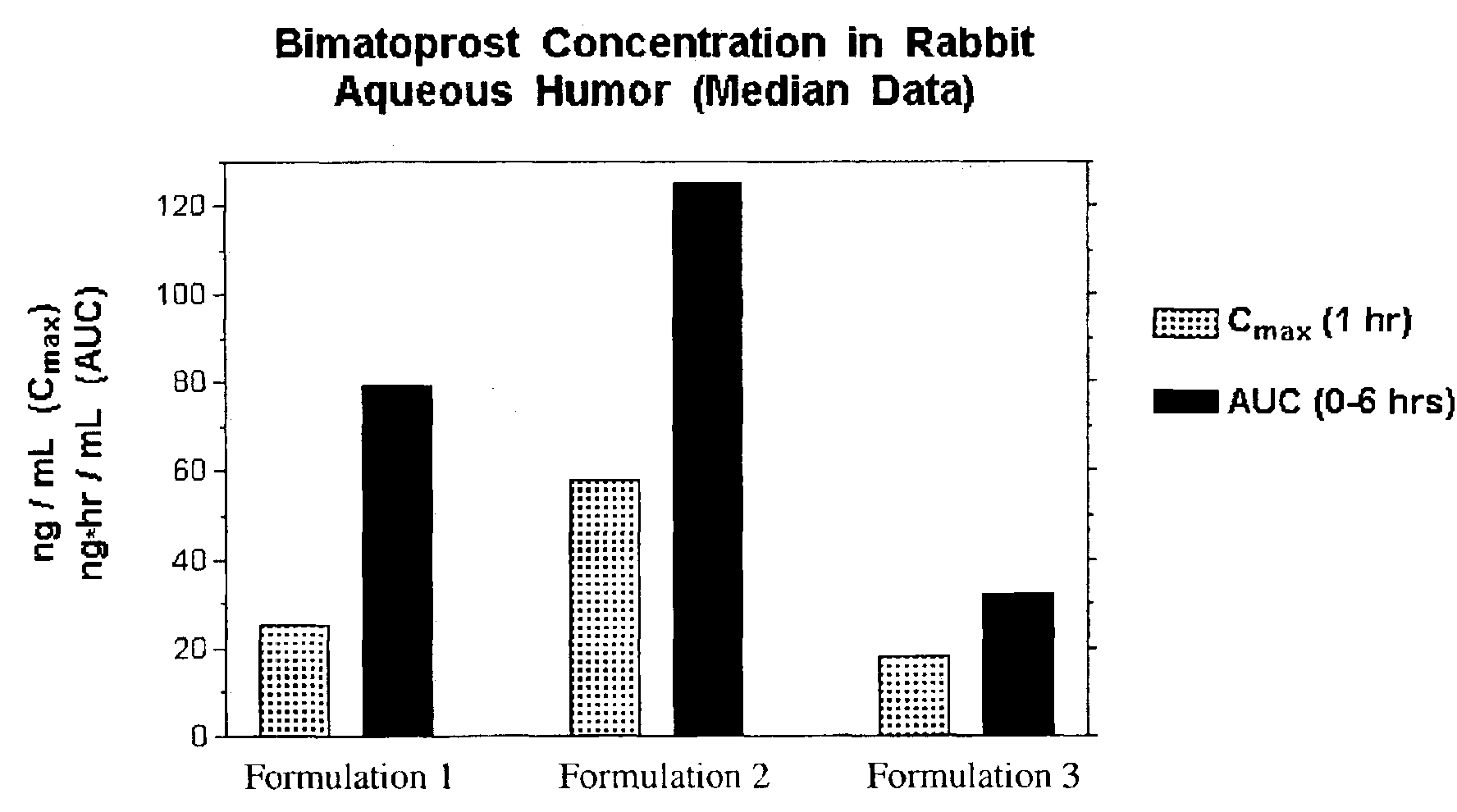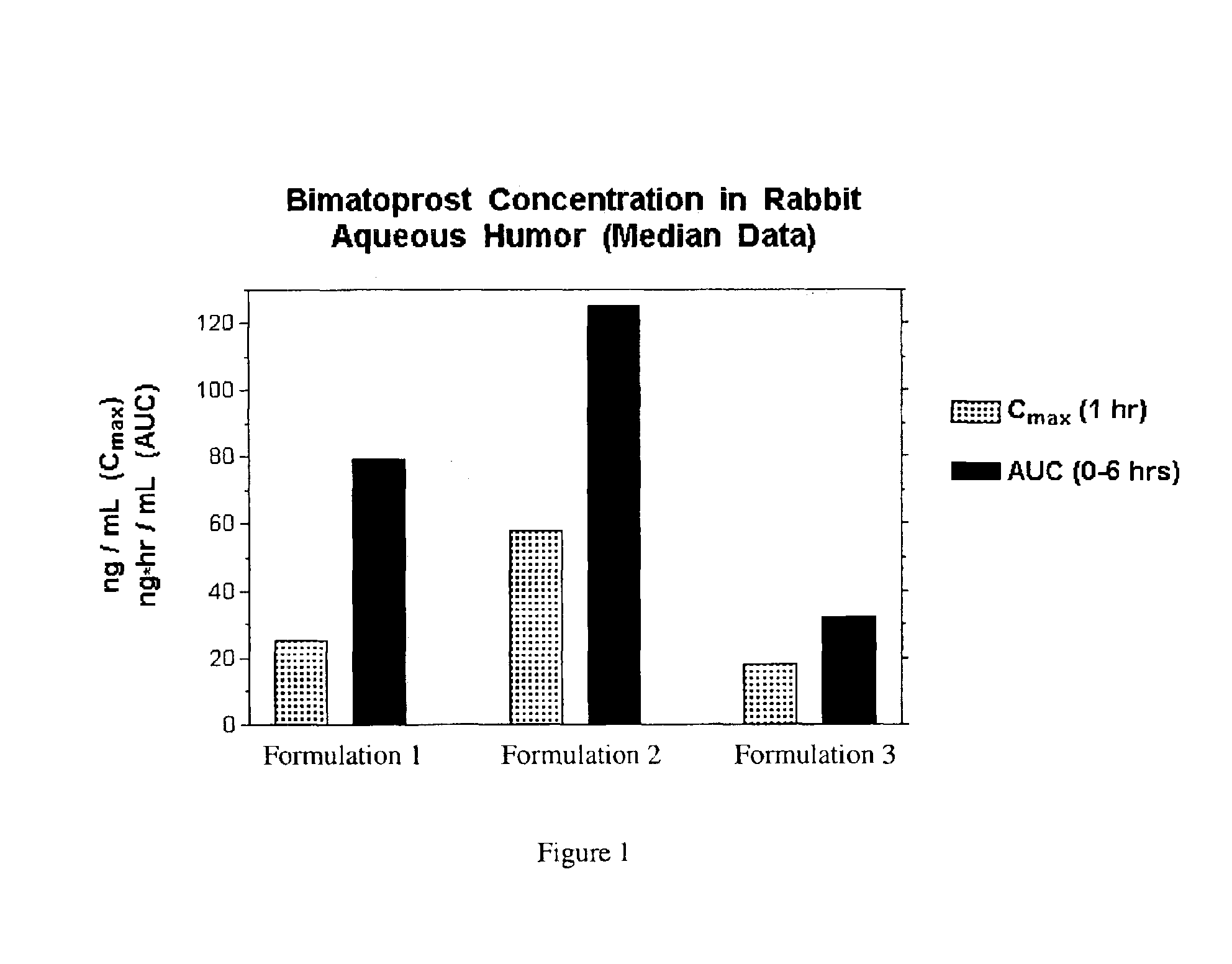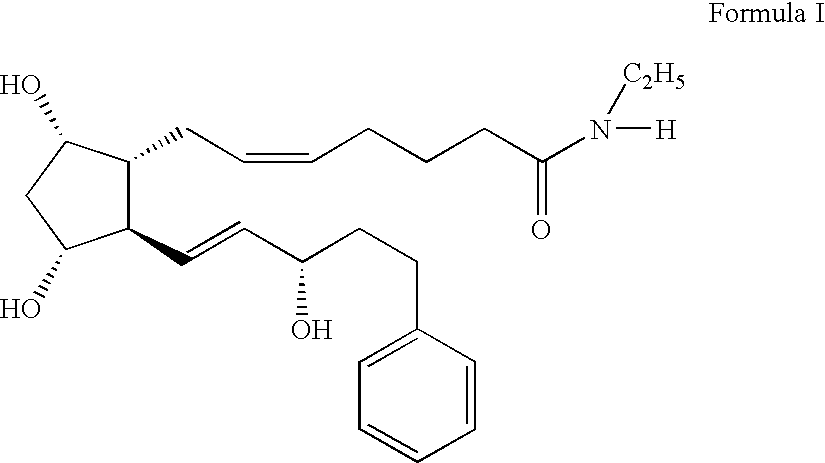Inhibition of irritating side effects associated with use of a topical ophthalmic medication
a topical ophthalmic and side effect technology, applied in the field of inhibition, can solve the problems of difficult to avoid irritation, difficult to formulate topical ophthalmic drugs, and often undesirable side effects of active drugs, and achieve the effect of reducing the bioavailability of the drug and reducing irritating or adverse side effects
- Summary
- Abstract
- Description
- Claims
- Application Information
AI Technical Summary
Benefits of technology
Problems solved by technology
Method used
Image
Examples
example 1
[0042]Formulation 1 was prepared as follows using the amounts shown below. All steps in the procedure of this example and the other examples were carried out at room temperature. Purified water (˜80% of batch size) was measured into an appropriately sized mixing container. Vigorous mixing was started using an overhead mixer (Rotosolver) to form a strong vortex. The following ingredients were added into the vortex in order shown, allowing each to dissolve before the next addition: sodium chloride, sodium phosphate, citric acid and benzalkonium chloride. The pH was checked and adjusted as needed with dilute hydrochloric acid or sodium hydroxide solution to pH 7.3. Bimatoprost was added during vigorous mixing and mixing was continued for 30-35 minutes so that the solution was clear. Purifed water was added to correct the final volume. The solution was sterilized by passage through a sterile filtration apparatus fitted with a 0.2 μm membrane.
[0043]
Formulation 1Grams / 100 mLBimatoprost [m...
example 2
[0044]Formulation 2 was prepared as follows using the amounts shown below. All steps in the procedure were carried out at room temperature.
Sodium Carboxymethylcellulose (Part I)
[0045]Purified water was measured (˜50% of batch size) into an appropriately sized mixing container and vigorous mixing was started using an overhead mixer (Rotosolver) such that a strong vortex formed. Sodium carboxymethylcellulose (purchased from Aqualon, a division of Hercules) was added to the vortex at a rapid rate, and the mixture was vigorously mixed for 30-35 minutes. Part I was quantitatively transferred to a Pyrex bottle using purified water as a rinse. The final volume was about 60% of batch size. The bottle was capped, and Part I was sterilized by autoclaving for 50 minutes at 121° C., then cooled to room temperature.
Salt and Drug Solution (Part II)
[0046]Purified water (˜35% of batch size) was measured into an appropriately sized mixing container. Vigorous mixing was started using an overhead mixe...
example 3
[0049]Formulation 3 was prepared in the same manner as formulation 2, except that ingredients added to the vortex in Part II are made with the addition of 2-hydroxypropyl β-cyclodextrin (purchased from Wacker Biochem Corp., Adrian Mich., under the tradename Cavasol W7 HP®) in the following order: boric acid, sodium borate, sodium chloride, potassium chloride, magnesium chloride, calcium chloride, 2-hydroxypropyl β-cyclodextrin, bimatoprost, and 2% Purite solution.
[0050]
Formulation 3Grams / 100 mLBimatoprost [mw = 415]0.032-Hydroxypropyl β-cyclodextrin [mw ≈ 1400]1.011Carboxymethylcellulose1.00Boric acid0.60Sodium borate0.045Sodium chloride0.34Potassium chloride0.14Calcium chloride0.006Magnesium chloride0.006Purite0.010Notes 1-Hydroxypropyl β-cyclodextrin is added to about ten-fold molar excess relative to bimatoprost.
PUM
| Property | Measurement | Unit |
|---|---|---|
| viscosity | aaaaa | aaaaa |
| viscosity | aaaaa | aaaaa |
| temperature | aaaaa | aaaaa |
Abstract
Description
Claims
Application Information
 Login to View More
Login to View More - R&D
- Intellectual Property
- Life Sciences
- Materials
- Tech Scout
- Unparalleled Data Quality
- Higher Quality Content
- 60% Fewer Hallucinations
Browse by: Latest US Patents, China's latest patents, Technical Efficacy Thesaurus, Application Domain, Technology Topic, Popular Technical Reports.
© 2025 PatSnap. All rights reserved.Legal|Privacy policy|Modern Slavery Act Transparency Statement|Sitemap|About US| Contact US: help@patsnap.com



